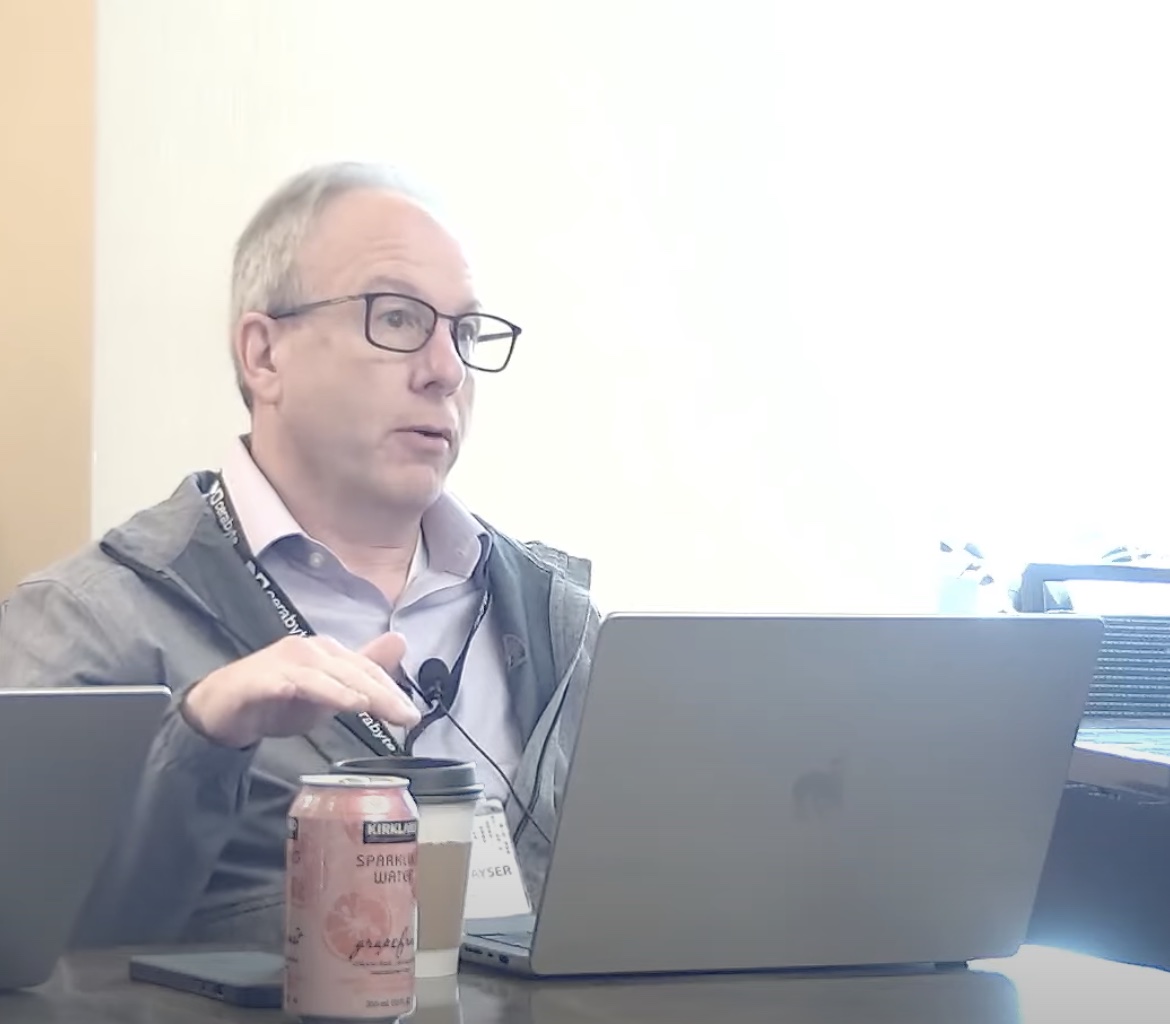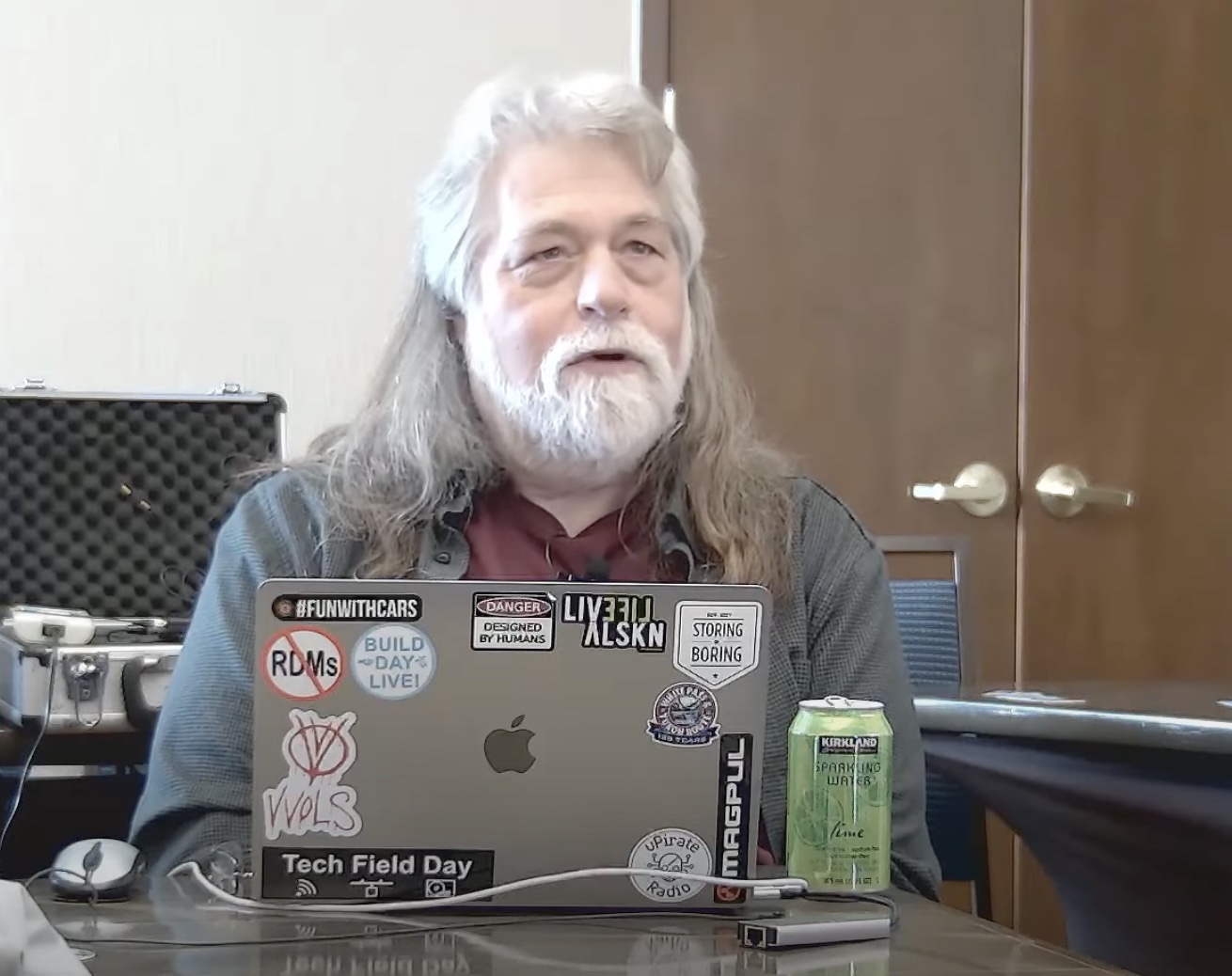United Nations defines sustainability as meeting the needs of the present without hurting future generations’ ability to meet theirs. The gravity of this message has trickled down through business institutions and societies worldwide. As emissions soar precipitating shifts in temperature, and freakish weather event, dire warnings and mandates were issued by governing bodies.
The upheaval brought on a season of change in corporate policies and individuals’ lifestyles. Nearly every organization took to setting up emission goals and tightening their energy belts. But the sustainability report card scores are still pretty weak, all things considered.
Before wrapping up, delegates at the Storage Field Day event in California huddled up to dig into this, and share their views on sustainability in the context of IT.
Overconsumption of Resources
To understand why sustainability is still amiss, one must know that organizations’ environmental claims do not often stack up to their environmental footprints. Nearly all companies have an IT unit today, either on premises or off-site. The scale depends on the size and operations of the organization. For small companies, it’s a setup of racks and servers tucked in a spare closet or the basement of the premise overseen by one man. For Googles and Amazons of the world, this setup is hundred times bigger. These behemoths run server farms of their own spanning thousands of square foot. The mid-tier companies rent infrastructures from these guys for a monthly subscription.
Regardless of where they keep their data, each of these groups of companies contribute, however differently, to the problem of climate change. At the top of the pyramid is datacenters. Datacenters account for 2% of the electricity demand in the US. Of that, storage systems consume about 25 to 30% of the power. A study published by the University of California indicates that for every 20 to 50 AI queries that are run, roughly 17 ounces of freshwater is consumed to cool down the systems. Cooling turns water to steam that is then released in the air.
Water is also the choice of coolant to for when electricity causes overheating of Ethernet sockets and other components. Glenn Dekhayser, technical consultant, points out that the colossal data processing centers in hot places like Phoenix, Arizona, require robust cooling for the rows and rows of servers they house inside thousands of square feet of space. Water is scarce in these parts, and freshwater reservoirs are overtaxed by their consumption rate.

Greenwashing
To cut down environmental footprints to a reasonable level, companies have embraced a combination of unique approaches to decarbonize. Some are experimenting with new technologies to figure out the greenest way to compute, while others are shifting from fossil fuel to renewable and clean energies like solar and wind. And from time to time, we get to hear about breakthroughs like under-sea datacenters, ML-based optimization of energy usage, fuel cell projects that would turn datacenters into power plants, and so on.
To add to that, almost all hyperscalers have declared zero net carbon emission, and others are working their way towards the net zero mark. Then what makes us say that corporations’ sustainability goals are unfulfilled?
Because, sustainability is not simple, nor is it a one-year project. There are nuanced distinctions and moving parts, that are often hit or miss. When it comes to datacenters, experts emphasize on three metrics – infrastructural efficiency, (cooling, HVAC and lighting), efficiency of the equipment, ie., servers, and the source of energy.
Today, sustainability, for the industry Goliaths, is more about crossing off a checklist for either optics or profits, than about cleaning up carbon footprints or leveling up the greenness. This misguided notion has pushed corporations to pursue sustainability for all the wrong reasons.
To make matters worse, a growing appetite for AI computation has sent companies on a ruthless pursuit for efficiency, and their sustainability ambitions are on a downward spiral.
Electronic Waste Overflow
Increasingly, the concept of sustainability in IT is premised on a popular narrative that choosing high-power, energy-efficient systems over, older, inefficient, power-guzzling ones means making headway in that direction. Now this latter variety has crowded the shelves of datacenters a long time, and there is truth in their efficiency and energy consumption stats. To a great extent, organizations can iron out the inefficiency problem in the hardware and software stacks with newer products, but it also has a downside.
Many businesses that have made it their goal to overhaul existing infrastructure for a greener, more impact-free one, have ended up contributing to the growing pile of e-waste. E-waste is a ballooning problem, and apparently, the world’s fastest-accumulating trash stream. The US alone accumulates hundreds of million tons of electronic junk every year, enough to fill a junkyard the size of several countries.
Naysayers have harshly criticized this turn towards sustainable equipment as ill-advised, reckless and shortsighted. It is an environmental scourge, and a monetary waste.
Companies often overshoot their IT budgets to secure newer systems, but, in terms of results, it is just poor planning. When older systems are discarded with still years of life in them, it makes the company no profit, nor does it help the planet, or its people. So, a major upgrade does not necessarily equal better environmental or business outcomes.
With AI explosion, the tech bucket list has sprawled, nudging companies to invest in all the latest and greatest technologies in the market. But rarely do companies use their newly minted workhorse systems to their max load. There is a lot of underutilization of resources which ultimately translate to misspent budget, and if it’s not gaining any value, it’s just bad debt.
That said, there is benefit in green investing. For example, the Solidigm D7 – P5810 which was unveiled at the Storage Field Day event, is a high-endurance SSD designed for HPC workloads that provides millions of IOPS from just 12 Watt of electricity. SSD solutions like it are incredibly vital to process power-hungry workloads at lower power envelop.
Regardless, HDDs continue to dominate the market. 2/3rd of the storage drives sold all over the world are HDDs. Besides, magnetic media like SSD and flash have limited longevity.
“I think, we, as an industry, need to figure out “form follows function” and really decide how that will impact sustainability,” said Vuong Pham, senior solutions architect.
All said and done, what is the alternative? The answer is indefinite. Recycling is one option. Another is handing down usable items to ensure full utilization.
But there’s a catch. “There are loads of components that you really shouldn’t be throwing in the landfill. Neither can you give away your old hard drives because there’s data on it that could potentially be mined. This seems to be a sticking point for lots of people,” said Andy Banta, storage technology expert.
As a result, green companies are resorting to recycling. “There are companies that are attempting to repurpose their old equipment that they are taking out of service or recycle appropriately,”

Advances and Developments
Organizations defend their claims of greenness with their renewable energy portfolios. The biggest tech companies all claim that their datacenters are run by 100% clean energy. Evidence shows a significant increase in the use of clean energy in these facilities. But a lesser known truth is that companies often use renewable energy credits (RECs) to overelaborate the stats. REC provides proof of use of clean energy while allowing them to tap into fossil fuel sources at the same time. In their defense, datacenters in far and remote parts of the world do not have access to solar, wind or hydropower, and need to rely on fossil fuel grids.
Comparatively, European nations have gone much ahead in the sustainability race than their American peers. In many places in Europe, there are limits on the total amount of electricity or water, datacenters can consume. With not enough resource to go around, these centers have to adhere to the regulations, and adopt sustainable ways to survive.
Wrapping Up
The digital explosion has brought the IT industry to a point where on the average, companies cater to a quaint million user base at once. This requires outsize datacenters, industrial servers, and thousands of kilowatts of power. Sustainability goals are sharply at odds with these. It will take years of close examination to check wasteful manners, figure out how to run datacenters at maximum capacity and minimum environmental footprints, and to consciously pull away from nonrenewable power to achieve the desired level of greenness. But if a habit is made to continuously test emission levels and evaluate the sustainability goals, big milestones can be achieved down the road.
To explore the topic of sustainability in depth, and for more interesting discussions, be sure to check out the Delegate Roundtables from the recent Storage Field Day event.

